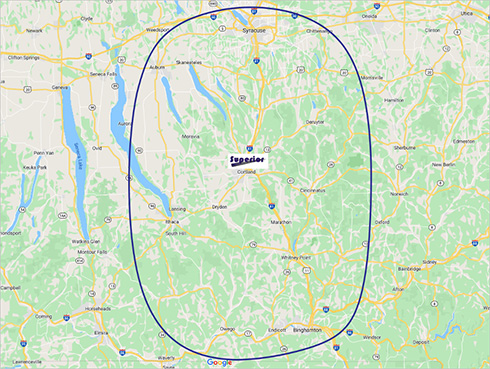- Plumbing Leaks – Often times, the root of a water issue can be inside of your home. Leaky pipes are very common which emphasizes the importance having your pipes regularly inspected for leaks, cracks or blockages. When winter comes around, properly preparing them for the colder weather will ensure they don’t freeze and burst.
- Leaky Basement Windows – The weakest point in your basement’s energy efficiency, and a common entrance for groundwater. How does water enter through your basement windows?
- Older style – Basement windows that are not as new or modern are often crafted with a steel or wooden frame that is mounted in an opening in the foundation wall. Though the low costs may be ideal, in the end they just will not hold up. In about five years or even less, the window frames will start to rust or corrode causing damage that becomes very prone to leaks.
- Window Wells – Basement window wells are made with gravel at the bottom of them to drain away collected water. Over time, window wells will eventually collect too much dirt, leaves and other debris, causing them to back up and inefficiently drain the water.
- Inapt Location for your Home – A classic cause of basement flooding is the result of a house that has been built on an unbefitting site. Homes are typically built on sloped terrains, allowing accumulated water to drain. If your home has not been built on an ideal location, surface drainage will be directed towards your home. To avoid water leaking through the foundation of your home, consider reshaping your yard. Soil against your home should always drain away. A good rule of thumb is to have the soil against your home at least 2” higher than it is 3’ from your home. This is referred to as the “grade”.
- Clogged Gutters – When heavy rainfall occurs, your gutters and downspouts may become blocked by debris that eventually causes excess water to seep into the foundation of your home. Your gutters should be cleaned and inspected at least once a year to ensure adequate drainage. As with the “grade”, the gutter should always extend at least 3’ from your home. If this is a potential hazard or nuisance during lawn care, etc., there are extensions that fold up
- Condensation – Leaks do not always mean that water is seeping through. High humidity levels inside your basement can also be a trigger for water in your basement. Homes with poor ventilation, warm summer temperatures, or homes near the ocean are most prone to this. If it looks like your walls, pipes, ceiling or furniture are “sweating,” it may be condensation. To solve this issue, install proper venting especially for your dryer if it’s located in the basement, or by using a dehumidifier to condition the air.
- Sewer Backup – Sometimes your sewer system can become inundated with wastewater or storm water. If this happens, the water will back up into your home through toilets, sinks or floor drains. Installing backwater valves to halt backflows on the sanitary sewer line may help prevent this.
- Failed Sump Pump – Yes, sump pumps are designed to protect your basement from water….but there is always a chance of malfunction. To prevent this from occurring, you should regularly inspect, clean and test your sump pumps. Also, consider an emergency backup sump pump to warn you of a malfunction and protect you during power outages and mechanical failure.

